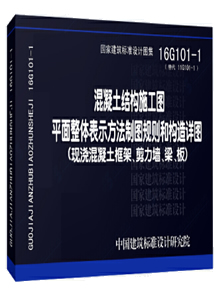给大家整理了相关的编程文章,网友濮俊力根据主题投稿了本篇教程内容,涉及到numpy矩阵的特征值、numpy矩阵特征向量、np.linalg.eig函数、numpy求矩阵的特征值与特征向量相关内容,已被700网友关注,如果对知识点想更进一步了解可以在下方电子资料中获取。
numpy求矩阵的特征值与特征向量
求矩阵的特征值与特征向量(np.linalg.eig)
语法
np.linalg.eig(a)
功能
Compute the eigenvalues and right eigenvectors of a square array.
求方阵(n x n)的特征值与右特征向量
Parameters
a : (…, M, M) array
Matrices for which the eigenvalues and right eigenvectors will be computed
a是一个矩阵Matrix的数组。每个矩阵M都会被计算其特征值与特征向量。
Returns
w : (…, M) array
The eigenvalues, each repeated according to its multiplicity.
The eigenvalues are not necessarily ordered. The resulting array will be of complex type, unless the imaginary part is zero in which case it will be cast to a real type. Whenais real the resulting eigenvalues will be real (0 imaginary part) or occur in conjugate pairs
返回的w是其特征值。特征值不会特意进行排序。返回的array一般都是复数形式,除非虚部为0,会被cast为实数。当a是实数类型时,返回的就是实数。
v : (…, M, M) array
The normalized (unit “length”) eigenvectors, such that the column
v[:,i]is the eigenvector corresponding to the eigenvaluew[i].
返回的v是归一化后的特征向量(length为1)。特征向量v[:,i]对应特征值w[i]。
Raises
LinAlgError
If the eigenvalue computation does not converge.
Ralated Function:
See Also
eigvals : eigenvalues of a non-symmetric array.
eigh : eigenvalues and eigenvectors of a real symmetric or complex Hermitian (conjugate symmetric) array.
eigvalsh : eigenvalues of a real symmetric or complex Hermitian (conjugate symmetric) array.
scipy.linalg.eig : Similar function in SciPy that also solves the generalized eigenvalue problem.
scipy.linalg.schur : Best choice for unitary and other non-Hermitian normal matrices.
相关的函数有:
eigvals:计算非对称矩阵的特征值eigh:实对称矩阵或者复共轭对称矩阵(Hermitian)的特征值与特征向量eigvalsh: 实对称矩阵或者复共轭对称矩阵(Hermitian)的特征值与特征向量scipy.linalg.eigscipy.linalg.schur
Notes
… versionadded:: 1.8.0
Broadcasting rules apply, see the
numpy.linalgdocumentation for details.This is implemented using the
_geevLAPACK routines which compute the eigenvalues and eigenvectors of general square arrays.The number
wis an eigenvalue ofaif there exists a vectorvsuch thata @ v = w * v. Thus, the arraysa,w, andvsatisfy the equationsa @ v[:,i] = w[i] * v[:,i]for :math:i \\in \\{0,...,M-1\\}.The array
vof eigenvectors may not be of maximum rank, that is, some of the columns may be linearly dependent, although round-off error may obscure that fact. If the eigenvalues are all different, then theoretically the eigenvectors are linearly independent andacan be diagonalized by a similarity transformation usingv, i.e,inv(v) @ a @ vis diagonal.For non-Hermitian normal matrices the SciPy function
scipy.linalg.schuris preferred because the matrixvis guaranteed to be unitary, which is not the case when usingeig. The Schur factorization produces an upper triangular matrix rather than a diagonal matrix, but for normal matrices only the diagonal of the upper triangular matrix is needed, the rest is roundoff error.Finally, it is emphasized that
Referencesvconsists of the right (as in right-hand side) eigenvectors ofa. A vectorysatisfyingy.T @ a = z * y.Tfor some numberzis called a left eigenvector ofa, and, in general, the left and right eigenvectors of a matrix are not necessarily the (perhaps conjugate) transposes of each other.G. Strang, Linear Algebra and Its Applications, 2nd Ed., Orlando, FL,
Academic Press, Inc., 1980, Various pp.
需要说明的是,特征向量之间可能存在线性相关关系,即返回的v可能不是满秩的。但如果特征值都不同的话,理论上来说,所有特征向量都是线性无关的。
此时可以利用inv(v)@ a @ v来计算特征值的对角矩阵(对角线上的元素是特征值,其余元素为0),同时可以用v @ diag(w) @ inv(v)来恢复a。
同时需要说明的是,这里得到的特征向量都是右特征向量。
即 Ax=λx
Examples
>>> from numpy import linalg as LA
(Almost) trivial example with real e-values and e-vectors.
>>> w, v = LA.eig(np.diag((1, 2, 3)))
>>> w; v
array([1., 2., 3.])
array([[1., 0., 0.],
[0., 1., 0.],
[0., 0., 1.]])
Real matrix possessing complex e-values and e-vectors; note that the
e-values are complex conjugates of each other.
>>> w, v = LA.eig(np.array([[1, -1], [1, 1]]))
>>> w; v
array([1.+1.j, 1.-1.j])
array([[0.70710678+0.j , 0.70710678-0.j ],
[0. -0.70710678j, 0. +0.70710678j]])
Complex-valued matrix with real e-values (but complex-valued e-vectors);
note that ``a.conj().T == a``, i.e., `a` is Hermitian.
>>> a = np.array([[1, 1j], [-1j, 1]])
>>> w, v = LA.eig(a)
>>> w; v
array([2.+0.j, 0.+0.j])
array([[ 0. +0.70710678j, 0.70710678+0.j ], # may vary
[ 0.70710678+0.j , -0. +0.70710678j]])
Be careful about round-off error!
>>> a = np.array([[1 + 1e-9, 0], [0, 1 - 1e-9]])
>>> # Theor. e-values are 1 +/- 1e-9
>>> w, v = LA.eig(a)
>>> w; v
array([1., 1.])
array([[1., 0.],
[0., 1.]])
总结
以上为个人经验,希望能给大家一个参考,也希望大家多多支持码农之家。









